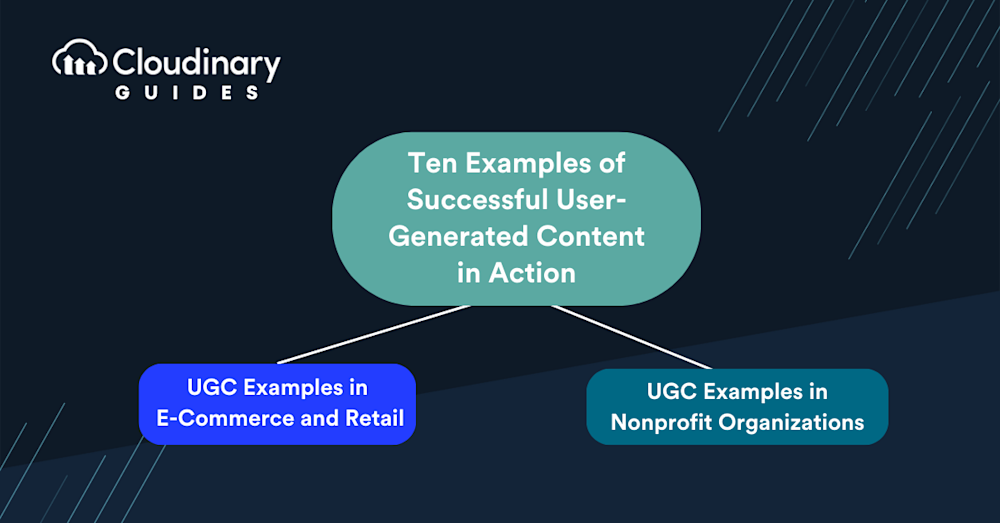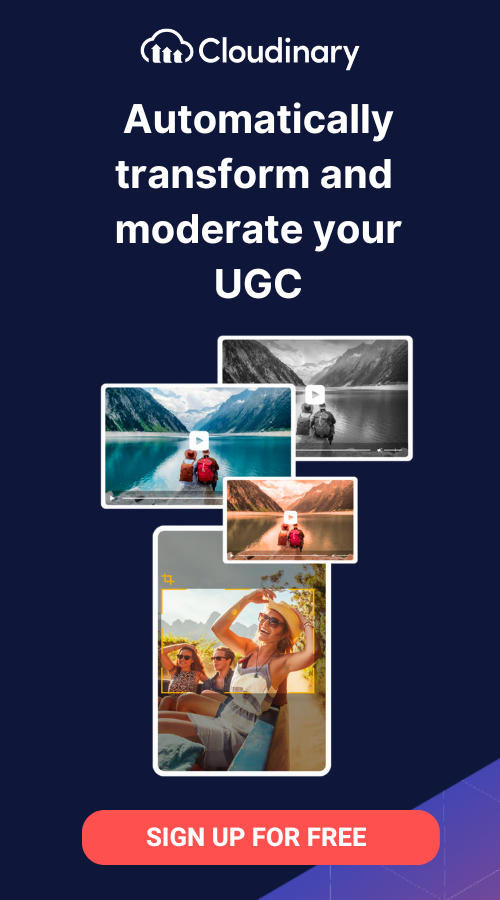What is a User-Generated Content Campaign?
User-generated content (UGC), which is generated for brands by their fans and followers, can be almost any type: text, photos, videos. The creators of UGC are real customers or prospects who receive no remuneration for their contributions, simply offering their views, experiences, and recommendations.
A UGC campaign is an organized effort by a brand for the purpose of encouraging users to share content that promotes the brand’s product or service. Even though UGC can and does happen organically, it would be much more effective if brands plan for it to champion specific messages or campaigns.
This article shows you examples of globally renowned and smaller brands that have advanced their marketing objectives through UGC, as follows:
- E-Commerce and Retail
- Coca-Cola: “Share a Coke” Campaign
- Apple: Shot on iPhone
- Lulus: UGC on Product Pages
- Pringles: Personalized Music Videos
- CLUSE: UGC on a Brand Homepage
- Glossier: Enlistment of Influencers
- Atom Tickets
- Airbnb: “Live There” Campaign
- Spotify: #FindYourFeels Campaign
- Netflix: Stranger Things Season 2 Marketing
- Nonprofit Organizations
In addition, this post addresses these two topics:
- Additional UGC Campaigns in Various Sectors
- Takeaways: How to Succeed With UGC
- Automation of UGC Campaigns With Cloudinary
Types of user-generated content
User-generated content is a crucial component in modern-day marketing strategies, showcasing an intersection between consumer engagement and brand promotion. The encapsulation of user experiences and brand narratives from a user perspective broadens the scope of content diversity and offers an authentic perspective, boosting relatability and enhancing brand loyalty. UGC primarily falls under two broad classifications: Organic UGC and Paid UGC.
Organic UGC
Organic UGC forms the backbone of authenticity. These are spontaneously shared user experiences without financial motivations. They offer a more truth-based representation of your brand or product as discussed by your customers. The narratives are unrestricted and more natural, providing the most realistic view of the user’s experience. There are several types of Organic UGC content examples available for leveraging by brands:
- Reviews and Testimonials – These are crucial UGC content examples with significant influence on consumer choices. Positive reviews, star ratings, and testimonials serve as ‘social proof’ of product quality. Converting these into graphics for sharing on social media platforms provides validation, builds trust, and enhance your brand reputation.
- Photos – Visuals are a powerful tool in UGC. User-shared photos depicting your product in use or after-use results can significantly impact and attract potential customers. The use of branded hashtags can help consolidate these images for easier reference and resharing.
- Videos – Product reviews, unboxing videos, and product hauls on platforms like YouTube and Instagram serve as compelling UGC. These can be entire videos revolving around your brand or casual mentions amid unrelated content. They offer visibility, engagement, and promote authenticity.
- Social media content – Mentions, shoutouts, or tags related to your brand on social media platforms are great UGC content examples to keep an eye out for. These could range from simple positive appreciation to detailed customer experiences. Reposting these across different platforms helps widen your reach and broaden your consumer base.
- Blog posts – If bloggers mention your brand or product in their posts or opinion pieces, it’s considered valuable UGC. These can be standalone reviews or a quick mention in a broader post. Sharing these posts or highlighting selective quotes from their content can provide immense credibility to your brand.
Paid UGC
Paid UGC is rapidly gaining popularity as a viable option, especially for upcoming brands striving to infuse user content into their narrative but lack customer-shared content.
Unlike influencers, Paid UGC is created by individual creators, offering an equally sincere perspective. Given that it’s financially endorsed by you, the authenticity of the content is maintained ─ much like regular UGC.
Potential creators can be approached independently via platforms like Fiverr or Upwork; nevertheless, well-established brands may find creators directly reaching out to them. Post-negotiating the terms of content creation, their authored material can be utilized across your website or various social media accounts, amplifying the reach and value of your user-generated content.
Pro Tip
Consider Deliver your Images with Cloudinary
With Cloudinary, you can easily deliver images to perfectly fit your graphic design and layout, on any device automatically. Save money through Cloudinary powerful CDN and transform your images on the fly.
UGC content examples in E-Commerce and Retail
Coca-Cola: “Share a Coke” Campaign
The idea of Coca-Cola’s Share a Coke campaign first emerged in Australia in 2011, when the company printed 150 of the most common and popular names on bottles and asked people to share a Coke with their loved ones. The campaign was welcomed with open arms and quickly became a success, with people enthusiastically sharing pictures of the bottle on social media.
Subsequently, the Coca-Cola marketing team customized the campaign in over 80 countries according to each country’s culture, customs, and background, with promotions on social media and traditional advertising channels.
Takeaway: Integrating UGC elements into products could be both a thrill for customers and a strong driver for participation in and generation of UGC—especially content that heavily relates to the product and its messaging.
Apple: Shot on iPhone
After learning that users were dissatisfied with the average iPhone camera’s performance of photos taken in the dark, Apple quickly launched the #ShotOnIphone campaign to restore trust. That UGC campaign, intended for both novice and expert photographers who took photos in the dark and shared them online with their iPhones, featured the coolest low-light images shot by everyday users with iPhone lenses. Attractive low-light photos were posted on YouTube under the title Shot on iPhone.
Thanks to all that innovative UGC, Apple not only earned back the faith of skeptical users, but also reduced development and manufacturing costs, avoiding the need to revamp the iPhone camera. What’s more, by incorporating users’ visual content into a global advertising campaign, Apple made those patrons feel special.
Takeaway: Turning customer complaints into a positive social-media campaign is a smart thing to do because it kills two birds with one stone, so to speak: Resolve public concerns about a product and promote it in a positive light to those unaware of the issues.
Lulus: UGC on Product Pages
Lulus Fan Photos is a great example of how UGC attracts conversion. On every product page, women’s clothing company Lulus displays pictures sourced from fans along with product details. This type of UGC goes beyond regular reviews.
As shown in the image below, users can upload their photo reviews, specifying their size and body type, so that others can see how the clothes might look on them.
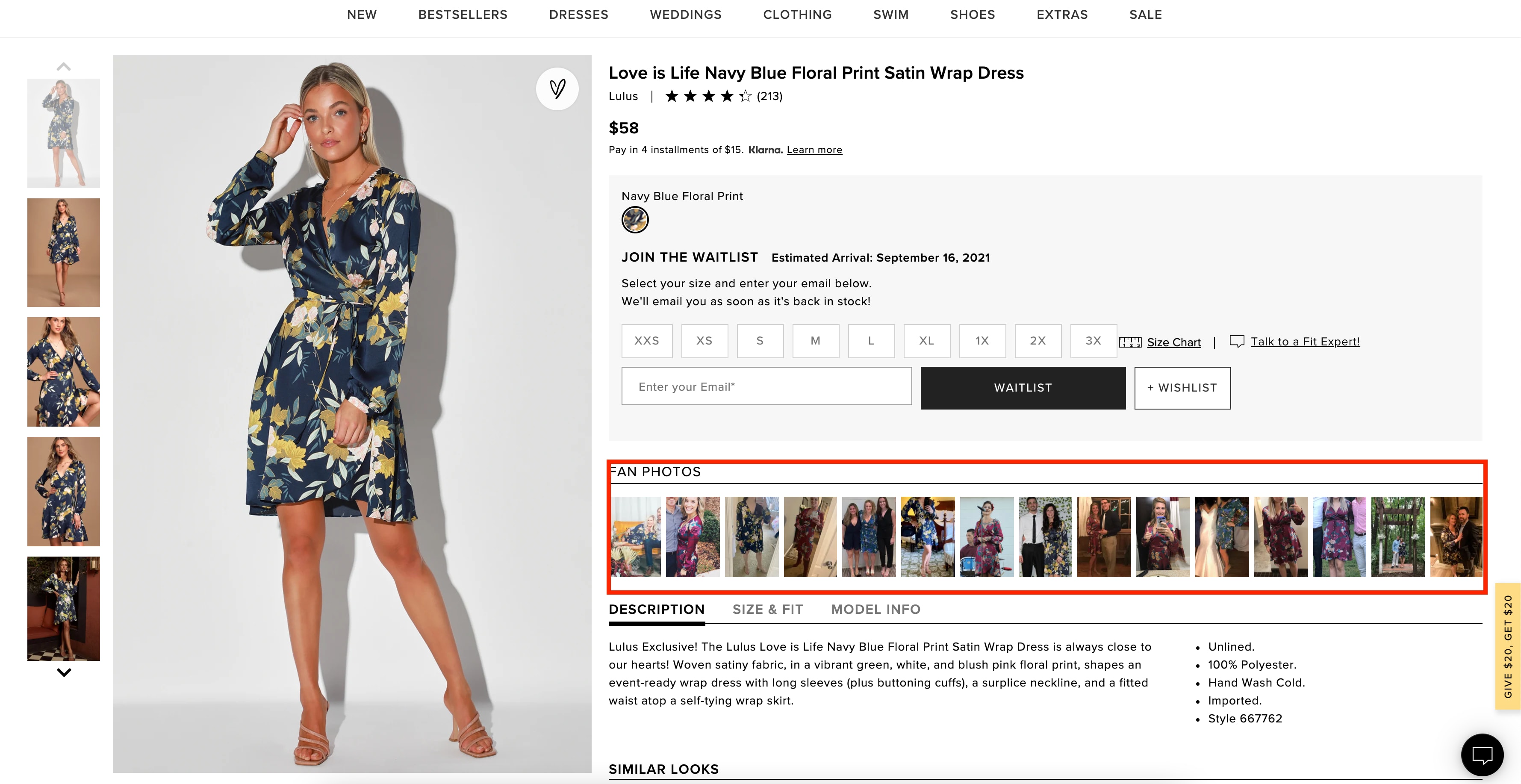
Takeaway: UGC is useful beyond social media. Embedding UGC into product pages helps consumers connect with products on a personal level by displaying how real-life people, including the consumers’ contacts, use the products.
Pringles: Personalized Music Videos
Pringles ran an innovative UGC campaign with two components:
- The Mr. P chatbot on Facebook Messenger
- A dedicated app with which fans could create personalized music videos
In short order, fans interacted with the chatbot, downloaded the app, and hastened to create outstanding music videos featuring Pringles. As a bonus, the brand held a competition with a trip to the Ibiza Rocks festival as the prize.
Besides enabling consumers to share photos of people enjoying Pringles products through music videos, Pringles also offered incentives to attract visits to its website, where tools for creating interactive content are available. Artwork invariably connects consumers and brands.
Takeaway: With software tools, you can go beyond the standard practice of creating and sharing UGC. Affording consumers the ability to build automated, personalized content related to your brand fosters participation and encourages the generation of compelling UGC.
CLUSE: UGC on a Brand Homepage

CLUSE is a watch company that gained positive publicity by posting UGC in the form of photos on its homepage, on social media, and on dedicated side pages. Such an approach encourages visitors to post their own images for wide exposure.
Takeaway: Some brands take the bold step of posting UGC on their most prominent real estate—the homepage. By showcasing customer photos there, they motivate shoppers to get involved in their UGC campaign and give their brand a more personal feel.
Glossier: Enlistment of Influencers
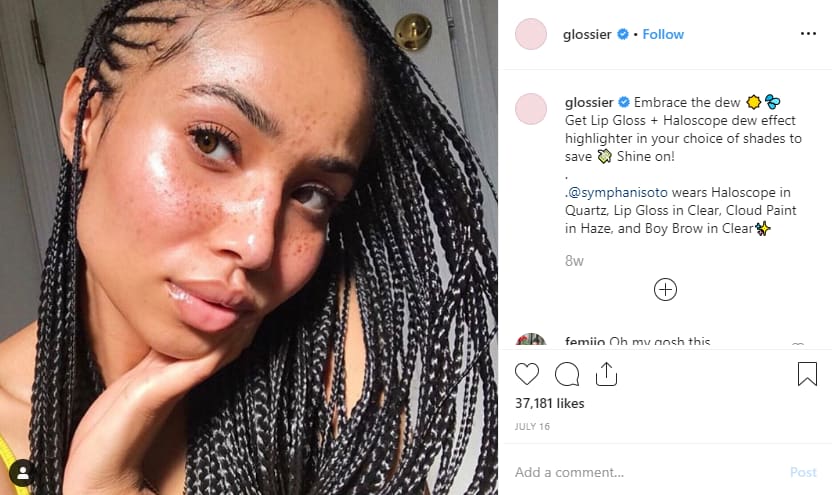
Glossier boosts its UGC advantage by enlisting Instagram’s leading influencers who receive prerelease Glossier products so that they can post product reviews and photos with the #glossier hashtag. By encouraging influencers with an extensive following to generate UGC, Glossier stands to reach a broad user base.
According to Glossier, 90% of the company’s revenue comes from free promotion through word of mouth. That’s truly impressive.
Takeaway: Do consider promoting brand awareness by connecting with your industry’s influencers on Instagram and other social platforms. Doing so attracts followers in your business and inflates the positive effect of UGC.
Atom Tickets: Snap Minis

In August 2020, with theaters reopening after the pandemic-induced shutdown, Atom Tickets offered an interesting ticket-buying experience on Snapchat. In addition to purchasing movie tickets, Snapchat users can share their moviegoing plans by posting stories, initiating or participating in group chats, or sending direct messages, such as requests to friends to snag a ticket for a nearby seat.
Airbnb: “Live There” Campaign
Airbnb’s “Live There” campaign utilized UGC to transform the travel experience. By encouraging users to share their unique living experiences in different locations, Airbnb showcased diverse accommodations and highlighted the local way of life, attracting travelers seeking authentic experiences.
Spotify: #FindYourFeels Campaign
Spotify’s #FindYourFeels campaign was an exemplary use of UGC in the digital media space. The campaign encouraged users to share how music influences their lives, creating a deeply personal and relatable content stream that resonated with Spotify’s diverse user base.
Netflix: Stranger Things Season 2 Marketing
Netflix’s marketing for Stranger Things season 2 was heavily reliant on UGC. Fans were encouraged to share their own themed content, art, and experiences related to the series, creating a viral buzz around the release.
UGC Examples: Nonprofit Organizations
Design for Change USA and Hasbro: Donations in Exchange for UGC
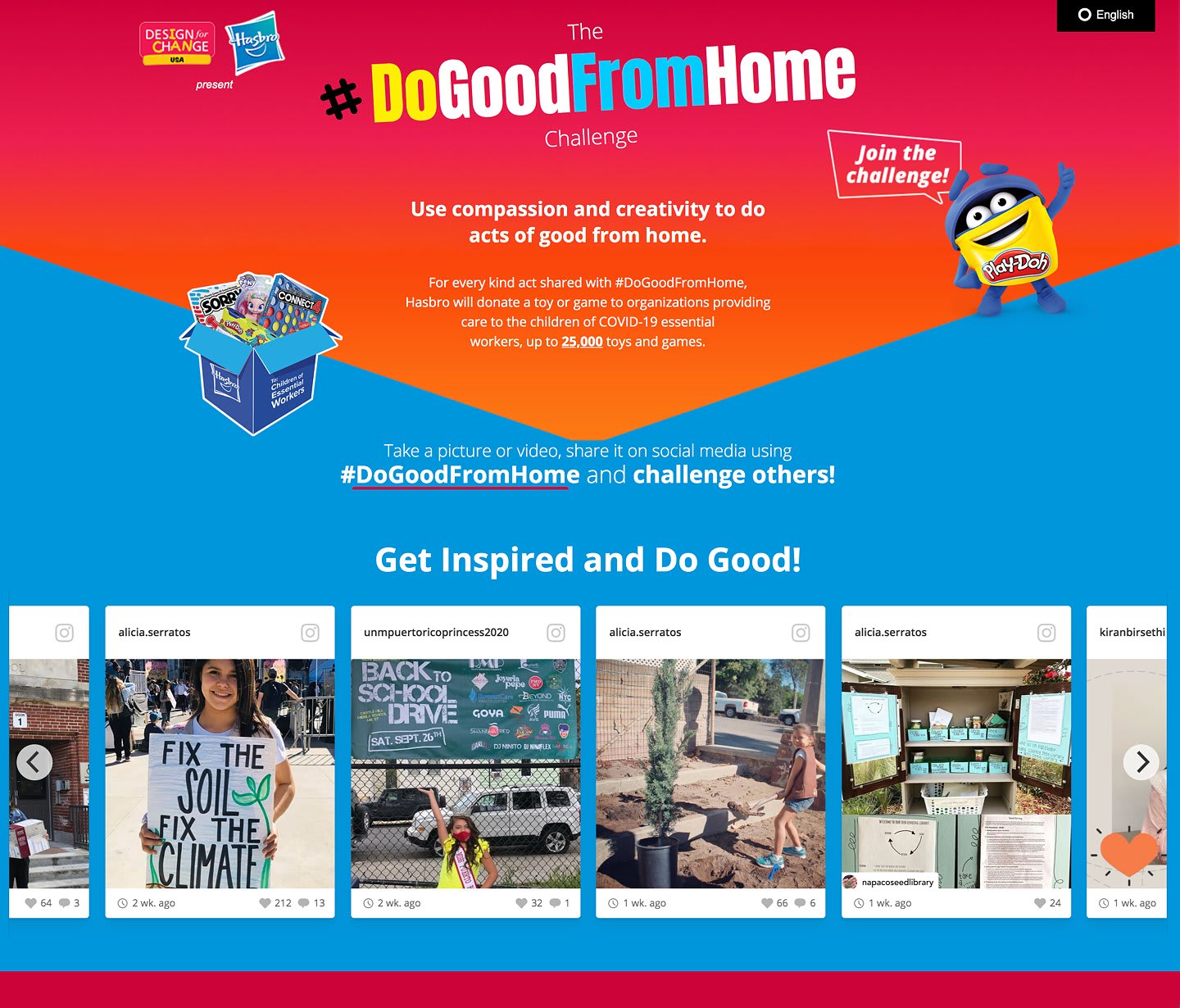
Design for Change is a nonprofit organization that works with children to turn them into “superheros” with a mission of creating a more compassionate world. The institution operates in 62 countries, frequently launching school challenges, social-media initiatives, and the like.
During the COVID-19 pandemic, Design for Change USA started a UGC campaign in collaboration with multinational board-game company Hasbro. For every kind act shared with the hashtag #DoGoodFromHome, Hasbro donated a toy or game to organizations that care for the children of essential workers.
Takeaway: UGC campaigns would succeed more by connecting with the social and moral sensitivities of the target audience. If users believe that their contributions will do good, they are more motivated to participate.
PetRescue: UGC at Huge Scale

PetRescue, Australia’s most popular animal-adoption website, aims to establish emotional connections with its audience through UGC images, listing more than 800,000 cats, dogs, guinea pigs, horses, rabbits, and other animals. However, all this data means that PetRescue must manage a whopping 25 million-plus user-generated images.
PetRescue was well aware that its process of uploading images (up to 30 images per pet file) was difficult for end-users, who could not crop or resize them. Additionally, long delays resulted from back-end tasks like queuing and image transformations, correspondingly reducing the effectiveness of the UGC campaign.
Gratifyingly, Cloudinary emerged as an excellent solution. By moving its entire image database to the cloud and optimizing user-generated images through automation with Cloudinary, PetRescue can now rally its audience to share many more images and then feature the photos on its pages in an attractive manner.with minimal administrative overhead.
Takeaway: Do not let manual steps or delays impede users from contributing content. Instead, support UGC at large scale through automation and streamlining of processes.
ALS Ice Bucket Challenge

The ALS Ice Bucket Challenge was founded by Pat Quinn and Pete Frates to benefit organizations that help individuals with amyotrophic lateral sclerosis (ALS) disease. The idea was simple: Raise awareness of ALS by encouraging the audience to use smartphone cameras to capture and distribute videos of friends, colleagues, and celebrities pouring ice water on themselves.
The campaign led to an extensive reach, flooding social media for months, generating 2.4 million tagged videos on Facebook alone, and raising $220 million for ALS organizations. As the campaign gathered steam and created a sensation on the internet, the ALS Ice Bucket Challenge became a prime example of effective UGC marketing.
Takeaway: The Ice Bucket Challenge motivated users to generate and promote content. What enabled the campaign to go viral was the combination of a simple and entertaining call-to-action (pouring ice water on oneself) with a good cause (to increase ALS awareness) and built-in sharing (inviting five friends).
Additional UGC Campaigns in Various Sectors
- Referrals and Community Forums: Many companies leverage referrals and community forums as a type of UGC. These platforms foster customer engagement and provide valuable insights and feedback directly from users.
- Webinars and Podcasts: Organizations increasingly use webinars and podcasts as UGC tools to discuss topics relevant to their brand or industry, inviting guests and community members to contribute.
- Conferences and Live Streams: Conferences and live streams have become crucial in generating UGC. These events offer platforms for user interaction, sharing of experiences, and fostering a sense of community.
Takeaways: How to Succeed With UGC
Given the enlightening examples above, here’s what to do to succeed with UGC:
- Make UGC easy to create: The easier it is for users to create UGC content, the more content they will create and the wider your campaign’s reach will be.
- Make UGC easy to promote: Offering users a clear, easy path for promotion helps your campaign go viral.
- Integrate UGC into your product: Integrating UGC elements into a product stimulates customers and expands participation.
- Turn negatives into positives: In case of a negative vibe about your brand, launch a UGC campaign to reverse it and present the product in a positive light.
- Add UGC to product pages: UGC in product pages enables consumers to see at a glance how the products are leveraged in real life, creating a personal connection.
- Add UGC to home pages: Though not a fit for all sites, this bold technique brings UGC to the forefront of your site, lending your brand a special front.
- Leverage influencers: By encouraging influencers on social media to share UGC on your product, you magnify the effect of your campaign.
- Connect to things users care about: UGC campaigns that tap into the audience’s moral sensitives and causes often win support and contributions.
- Show users how to generate content and promote it: UGC is not just about creating the content. Give users a clear way to promote the content they share and widen the reach..
- Automate: Manual work is often clunky, cumbersome, and error prone. Automating UGC processes saves time and energy for both your users and site administrators.
Automation of UGC Campaigns With Cloudinary
Though UGC images and videos are key elements of an engaging experience, they’re effective only if the viewing experience is ideal, i.e., they must be of the highest quality and must load fast on all devices and browsers. To create that experience, brands must aim for seamless and efficient uploads and moderations, dynamic transformations, and secure delivery at scale. Fortunately, Cloudinary has your campaign covered by automating these steps:
-
- Serve processed assets instead of the originals to ensure that no malicious content is shared on your channels.
- Auto-format images and videos to determine the best display format for the user’s browser.
- Automatically display high-resolution assets at the smallest size possible without visual degradation.
- Automatically crop assets to focus on their most relevant parts.

